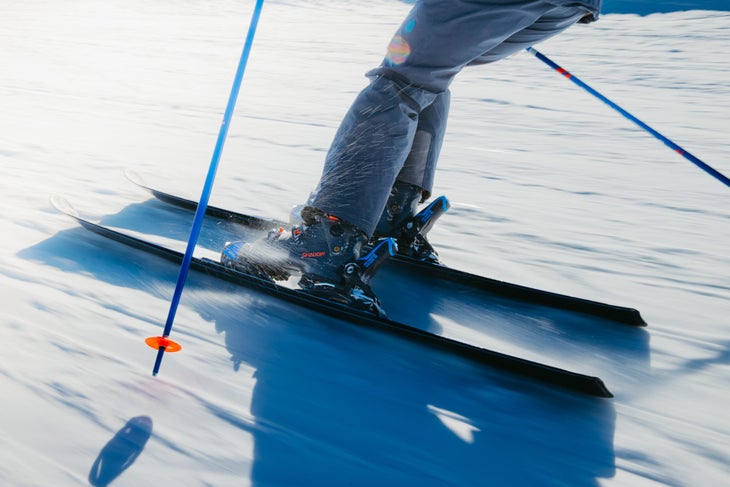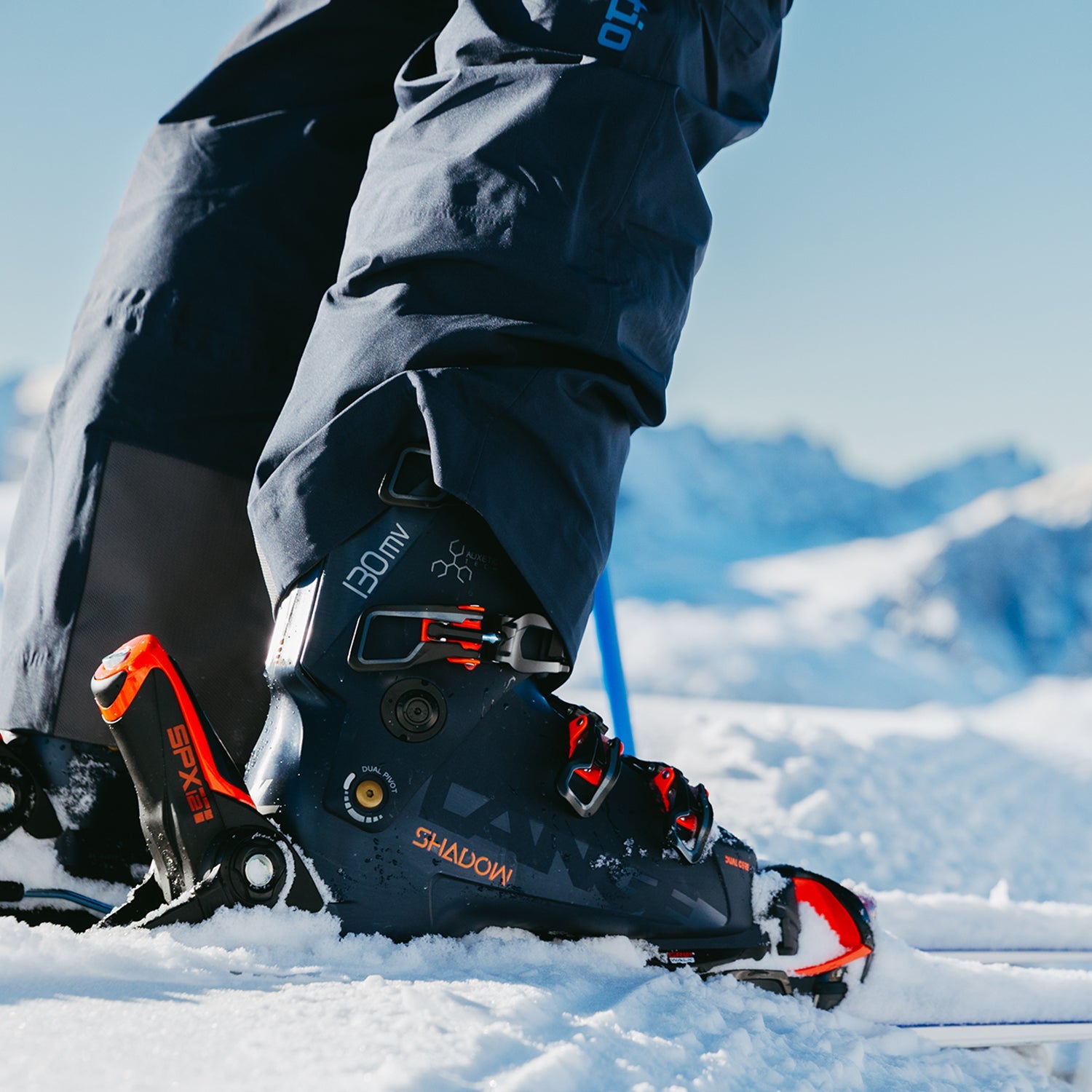A skier is only as dynamic as the boots they wear. ItÔÇÖs the piece of gear that connects an athleteÔÇÖs energy to the rest of their ski systemÔÇöand Lange caught on to some strategic ways to make that connection more efficient and comfortable. With the , skiers will unlock their full potential and smoother turns this season. To learn all about the genius behind the Shadow, we talked to Thor Verdonk, technical product director of winter sports equipment at Lange. HereÔÇÖs what he had to say.
║┌┴¤│ď╣¤═°: Where did the inspiration for the Shadow come from?
Thor Verdonk: LangeÔÇÖs goal was to design a boot system that could output more energy than the skier put in to make skiing easier and more dynamic. For inspiration, we looked at full-suspension mountain bikes. They have suspension and smoothness while maintaining tire grip and drive performance. With this in mind, we started to think differently about how a ski boot functions.

The rocker arm suspension concept was the real aha moment for us. We knew there was a better way to deliver and receive energy from the ski system and current snow conditions using that same principleÔÇöand we brought it to life with the Shadow.
What sets the Shadow apart from traditional ski boots?
The Shadow is an all-new look at how the ski boot functions. Traditional boots are typically fixed with two screws to connect the lower shell and upper cuff. These fixed points are very close to the actual central pivot point around your ankle joint. This creates a very small and centralized zone of power. That means the transfer of energy from your body through your ski boot relies on plastic deformationÔÇödistortion of the shell from your weight. To take the mountain bike rocker arm concept to ski boots, we developed two proprietary features that work together to deliver enhanced power delivery and energy transmission, for improved feedback and feeling.
- The Suspension Blade is a long lever arm thatÔÇÖs molded into the lower shell of the boot and sandwiches the upper cuff, connected by an elastomer. Thanks to this feature, we no longer fix the cuff and shell in a static fashion. The arm increases leverage, so your energy powers through the full length of your boot. Meanwhile, the elastomer absorbs shocks, provides rebound, and delivers smoother power.
- The Dual Pivot adds a secondary connection just below the central pivot point. Combined with the Suspension Blade, this additional pivot point mimics the rocker arm concept by creating points of tension and compression above and below the central pivot. That translates to superior rebound, increased snow-contact feeling, and smooth power delivery.
The Suspension BladeÔÇôDual Pivot system is available in two elastomer optionsÔÇöhard and softÔÇöso skiers can dial in their desired feel of power and rebound. Need a visual? Check out this video:
What is the mechanical advantage concept?
Mechanical advantage is the law of leverageÔÇöone of the simple machine concepts. If you have a lever arm and a pivot point, where you put the pivot can either increase or decrease the energy required to lift or move an object. In Shadow, weÔÇÖve implemented that concept with the longer lever arm of the Suspension Blade and its high elastomer connection point in relation to the central pivot. The result? More power out to the ski/binding system than the skier puts into flexing the front of the boot.
Can you tell us about some of the other technical innovations the Shadow embodies?
When creating the Shadow, we also focused on the fit of the liner. Visualize a ski boot:the liner is the only part of the boot that actually touches our bodies. Because of this direct interaction between body and boot, the fit of the liner is important for optimizing comfort and performance. Using the Auxetic concept, geometric-patterned cuts allow the two-dimensional material to adapt three-dimensionally to naturally and precisely cradle the foot shape. Adding Auxetic liner material allowed Lange to achieve an ultracomfortable fit while enhancing performance by accurately translating body movements to the holistic ski system.
Who was this boot designed for?
The Shadow was designed for all-mountain ski enthusiasts looking for the perfect marriage of fit and performanceÔÇöand anyone who wants to get more out of their skiing.
A great-fitting ski boot is every skierÔÇÖs most essential piece of equipment. For more than 50 years, LangeÔÇÖs attention to foot mechanics and desire to help skiers perform better has resulted in some of the most important innovations in ski boot design. From World Cup racing to the Freeride World Tour, Lange is consistently the industry benchmark. See why at .

